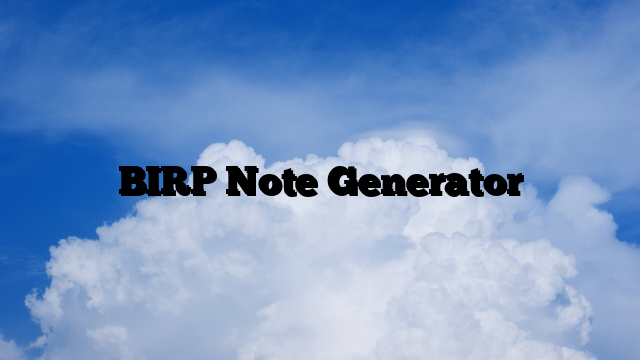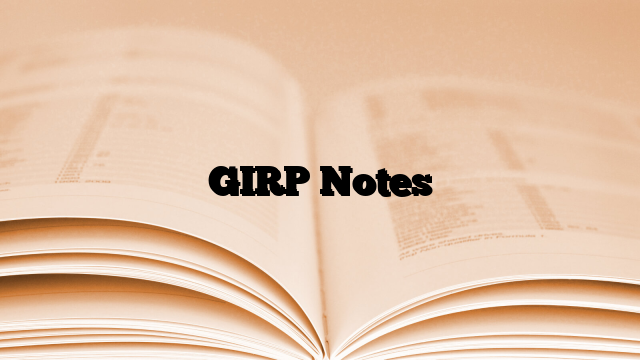BIRP notes, an essential component in behavioral health, provide a structured method for documenting and addressing emotional and behavioral issues in adolescents, particularly focusing on anger. This document delves into the nuances of BIRP notes, an acronym for Behavior, Intervention, Response, and Plan, specifically tailored for adolescents grappling with anger. These notes are pivotal in offering a comprehensive and systematic approach to understanding and managing anger-related behaviors. By meticulously recording observed behaviors, interventions applied, the adolescent’s response, and a strategic plan for ongoing management, BIRP notes serve as a vital tool for therapists and healthcare professionals in crafting effective, individualized treatment plans for young individuals facing the complex challenges of anger management.
BIRP Notes Anger Adolescents Examples
Example 1:
B – Behavior: John, a 15-year-old male, exhibited signs of anger during the group therapy session. He raised his voice when discussing family issues, slammed his fist on the table, and used derogatory language towards peers. The outburst lasted for approximately 5 minutes.
I – Intervention: The therapist immediately intervened by calmly asking John to step outside for a one-on-one discussion. The therapist used deep breathing techniques with John to help him calm down, and employed reflective listening to understand the underlying causes of his anger. John was reminded of the group’s rules regarding respect and non-violent communication.
R – Response: After initial resistance, John responded positively to the breathing exercises, showing a visible reduction in physical tension. He expressed regret for his behavior in the group and was able to articulate that discussions about his family triggered his anger. John agreed to work on his communication skills and acknowledged the need for self-control in stressful situations.
P – Plan: Moving forward, John will engage in individual therapy sessions focused on anger management. Techniques such as cognitive-behavioral therapy (CBT) will be used to address his triggers and develop healthier coping mechanisms. In group therapy, a ‘time-out’ signal will be established for John to use when feeling overwhelmed. The therapist will also coordinate with John’s family to address potential home environment stressors. Regular monitoring of John’s progress and adaptation of strategies will be essential.
This example includes specific details on the behavior observed, the intervention strategies used, the adolescent’s response to these strategies, and a clear plan for future management of similar incidents. It’s important in BIRP notes to remain objective and factual, focusing on observable behaviors and direct interventions.
Example 2:
Certainly! Here’s another example of a BIRP note focusing on an adolescent dealing with anger issues:
B – Behavior: Emily, a 16-year-old female, showed signs of anger during a scheduled individual therapy session. She repeatedly interrupted the session, spoke in a raised voice about her frustrations with school, and threw a cushion across the room. Her display of anger lasted for about 10 minutes.
I – Intervention: The therapist maintained a calm demeanor and provided Emily with a safe space to express her emotions without judgment. Cognitive restructuring techniques were used to help Emily identify and challenge her negative thoughts. The therapist also guided Emily through a mindfulness exercise to help her regain composure.
R – Response: Emily initially struggled to engage with the cognitive restructuring process but gradually began to participate. She was able to calm down after the mindfulness exercise and started to express her feelings more constructively. Emily acknowledged that her anger was a reaction to feeling overwhelmed by schoolwork and peer pressure.
P – Plan: The plan for Emily includes continuing with weekly individual therapy sessions focusing on anger management and coping strategies. The therapist will introduce progressive muscle relaxation techniques to help her manage physical symptoms of anger. Additionally, a meeting with Emily’s school counselor will be arranged to address her academic concerns. The therapist will also explore family therapy options to ensure a supportive home environment. Regular follow-ups will be scheduled to assess Emily’s progress and adjust the treatment plan as necessary.
This BIRP note illustrates a comprehensive approach to managing anger in adolescents, highlighting the importance of individualized interventions, the adolescent’s response to these interventions, and a forward-looking plan for continued support and management.
Things to include in (BIRP) notes for adolescents dealing with anger?
Behavioral Incident Report and Plan (BIRP) notes for adolescents dealing with anger might include several key components:
- Behavior: Documentation of the specific behaviors observed, particularly those related to anger. This could include instances of verbal outbursts, physical aggression, or other actions that indicate anger.
- Intervention: Details of the interventions used during the incident. This could be counseling techniques, calming strategies, or any other methods employed to manage the situation.
- Response: How the adolescent responded to the interventions. This part is crucial as it sheds light on the effectiveness of the strategies used and the adolescent’s willingness to engage in the process.
- Plan: A forward-looking plan that outlines steps to be taken to manage future incidents of anger. This might involve ongoing therapy, anger management techniques, specific goals for the adolescent, or changes in intervention strategies based on the response observed.
When writing BIRP notes, it’s essential to be factual, objective, and detailed. The focus should be on observable behaviors and direct responses, avoiding subjective interpretations or assumptions about the adolescent’s motivations. This approach helps in creating an effective and tailored plan for each individual.
The Bottom Line
BIRP notes offer an invaluable framework for understanding and managing anger in adolescents. Through the detailed recording of behaviors, interventions, responses, and plans, these notes provide a structured approach that is essential in the therapeutic treatment of anger issues among young individuals. They enable mental health professionals to tailor interventions to each adolescent’s unique needs, ensuring a more effective and empathetic response to their emotional challenges. The adaptability and comprehensive nature of BIRP notes make them a fundamental tool in guiding adolescents towards healthier ways of coping with anger, fostering resilience and emotional well-being in their journey towards adulthood. This exploration underscores the significance of BIRP notes as a cornerstone in the field of adolescent behavioral therapy.






